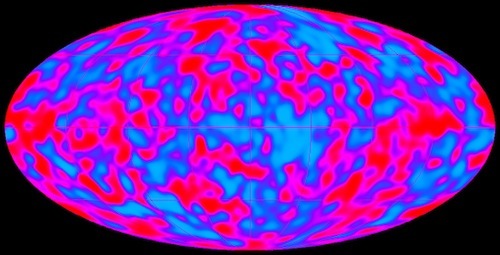 Physics, Earth & Space
Physics, Earth & Space
For the Inception of the Universe, No Big Bang Needed?

Under the headline “Researchers Reveal How an Expanding Universe Can Emerge Without a ‘Big Bang,’” SciTechDaily explains:
When soup is heated, it starts to boil. When time and space are heated, an expanding universe can emerge, without requiring anything like a “Big Bang”. This phase transition between a boring empty space and an expanding universe containing mass has now been mathematically described by a research team at the Vienna University of Technology, together with colleagues from Harvard, the MIT and Edinburgh. The idea behind this result is a remarkable connection between quantum field theory and Einstein’s theory of relativity.
A Cookbook for Spacetime?
Everybody knows of the transitions between liquid, solid and gaseous phases. But also time and space can undergo a phase transition, as the physicists Steven Hawking and Don Page pointed out in 1983. They calculated that empty space can turn into a black hole at a specific temperature.
Can a similar process create a whole expanding universe such as ours? Daniel Grumiller from the Vienna University of Technology looked into this, together with colleagues from the USA and Great Britain. Their calculations show that there is indeed a critical temperature at which an empty, flat spacetime turns into an expanding universe with mass. “The empty spacetime starts to boil, little bubbles form, one of which expands and eventually takes up all of spacetime”, explains Grumiller.
In that headline, the operative word is “can,” which should have been “could.” The point is that the Big Bang is an experimentally derived event, whereas the theories that describe the universe are mathematical constructs that approximate the data. In one particular theory of space-time — what the article calls the “AdS-CFT conjecture” — there is the possibility of an undiscovered quantum field that can cause space-time to erupt like a boiling pot of water. They call this a phase transition, but you should recognize a few things:
- This is a speculative theory.
- Theories are math.
- Math solutions don’t always have physics solutions.
- By a series of analogies to analogies to analogies (no math), they tie the math solutions to the experimentally observed Big Bang.
- It is very unlikely that the hard work of filling in the math steps will confirm the speculation.
This is the part of physics we usually keep hidden from the public — the nightmares that wake us up at night and suggest connections we can’t really explain. It is only after we spend the day (or month) trying out various math tricks that we convince ourselves that there might be something to that bad dream after all. Then we go to the public and make it seem like we understood the logical connection all along and derived it from first principles.
It seems that there is a recent trend toward publishing our bad dreams, perhaps out of concern that we might be scooped, or perhaps because the public can’t tell the difference between speculation and science anymore, or perhaps because the funding goes to the best storyteller rather than the most rigorous analyses.
Image: Cosmic Microwave Background/NASA.
